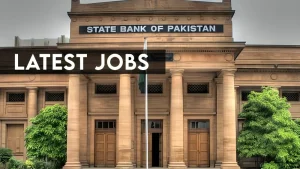ISLAMABAD, MAY 29, 2025: Pakistan’s economy is showing signs of recovery and stabilization, which was also proved by the recent Fitch Ratings upgrade, said the latest Monthly Economic Update & Outlook released by the Finance Division’s Economic Adviser’s Wing.
Other macroeconomic indicators, highlighted in the report, that offer similar positivity include the current account (CA) surplus, record-low inflation, and notable growth in remittances.
READ MORE: Pakistan Announces Strategic Bitcoin Reserve
The report said that macroeconomic fundamentals have considerably improved in the outgoing fiscal year. The report mentions Fitch Ratings upgrade as an endorsement of Pakistan’s economic management, coinciding with a narrowing fiscal deficit, growing primary surplus, and a shift towards an accommodative monetary policy. Here is a section-by-section depiction of the country’s economy:
FISCAL PRUDENCE PAYING OFF
The report reveals a substantial improvement in fiscal indicators, increased revenue collection and controlled expenditure. During the nine months of fiscal year 2025 (July–March FY2025), total revenues rose by 36.7% year-on-year to Rs. 13.37 trillion. A sharp 68% increase in non-tax revenues added much needed boost here. Breakdown of this revenue shows that it primarily came from profits of the State Bank of Pakistan (SBP), petroleum levies, and dividends. The Federal Board of Revenue’s (FBR) tax collections also grew by 26.3% to Rs. 9.3 trillion.
However, the report also concedes hike in total expenditures by 19.4%, despite the fact that the government successfully trimmed the fiscal deficit to 2.6% of GDP from 3.7% a year earlier. Meanwhile, the primary surplus doubled to 3% of GDP.
EXPORTS, REMITTANCES STRENGTHEN EXTERNAL POSITION
Pakistan’s external account posted a current account surplus of $1.9 billion during July–April FY2025, reversing a deficit of $1.3 billion in the same period last year. Breakdown of this shows 6.8% increase in goods exports ($27.3 billion). Imports also showed 11.8% increase ($48.6 billion), but the trade imbalance remained within manageable limits.
On the other hand, remittances soared by 30.9% to $31.2 billion, led by strong inflows from Saudi Arabia and the UAE. Service exports also grew by 9.3%, helping to cushion the impact of a $2.5 billion services trade deficit.
READ MORE: Tax Relief Demanded: Salaried Workers Urge Hike in Exemption Threshold
However, net foreign direct investment (FDI) declined by 2.8% to $1.8 billion. China remained the largest investor, followed by the UK and Hong Kong. Most investments were channelled into financial services, power, and oil & gas exploration, the report showed.
LOW INFLATION LEADS TO EASED POLICY RATE
First in almost three years, the Consumer Price Index (CPI) inflation showed decline, dropping to 0.3% year-on-year in April 2025—the lowest in decades. This is down from 17.3% in April 2024. Month-on-month inflation also recorded a decline of 0.8% in March 2025.
In view of the lowering inflation, the central bank’s Monetary Policy Committee (MPC) cut the policy rate by 100 basis points to 11% in May 2025. This immediately led to private sector credit uptake, reaching Rs. 751.5 billion, up from Rs. 239.9 billion as compared to the same period last year.
INDUSTRY HESITATES, BUT SHOWS SIGNS OF RECOVERY
Despite the overall improvement in the macroeconomic factors, the Large-Scale Manufacturing (LSM) sector remained under pressure, contracting 1.5% during July–March FY2025. In March 2025, however, a modest 1.8% improvement was recorded on a year-on-year basis. At the same time, textiles, apparel, beverages, and pharmaceuticals sectors showed resilience.
The primary driver of industrial growth during this time came out to be the automobile sector, which showed 38.3% increase in car production during July–April FY2025. The economic outlook report shows that trucks, buses, and jeeps registered even stronger gains. The cement sector remained stagnant, with exports rising but domestic sales slipping – a factor that is being accounted for by the government for the upcoming budget.
GOVERNMENT INTERVENTIONS BOOST AGRICULTURE
Pakistan’s agriculture sector also exhibited a positive trajectory, particularly in wheat cultivation during the Rabi season. With 22.07 million acres under wheat, the estimated output stands at 28.98 million tonnes. Credit disbursement to farmers rose by 15% to Rs. 1.88 trillion, complemented by increased imports of agricultural machinery and better fertiliser availability.
Fertiliser supply and offtake are significantly higher than last year for the ongoing Kharif season as well.
SOCIAL WELFARE, CLIMATE BECAME A TOP ECONOMIC PRIORITY
The outlook report shows that social protection initiatives also continue to gain momentum. The Pakistan Poverty Alleviation Fund disbursed over 20,700 interest-free loans worth Rs. 960 million in April alone. The Benazir Income Support Programme (BISP) disbursed Rs. 409.4 billion during July–March, a 28.7% increase year-on-year.
On the climate control goals, Pakistan launched its first-ever Green Sukuk to promote sustainable investment and environmental protection.
THE JOURNEY AHEAD
The report projects inflation to likely remain between 1.5% and 2.0% in May, but potentially rising to 3% to 4% in June. If better water availability is ensured, and weather conditions are favorable, agriculture and industrial sectors may continue to follow the path of gradual recovery.
READ MORE: Delay In Tax Refunds Causing Severe Challenges For Textile Industry
Moreover, export and remittance momentum is expected to persist, helping to keep the current account position stable. Despite economic uncertainties – especially in the U.S. and China – demand for Pakistani exports is expected to stay strong.









